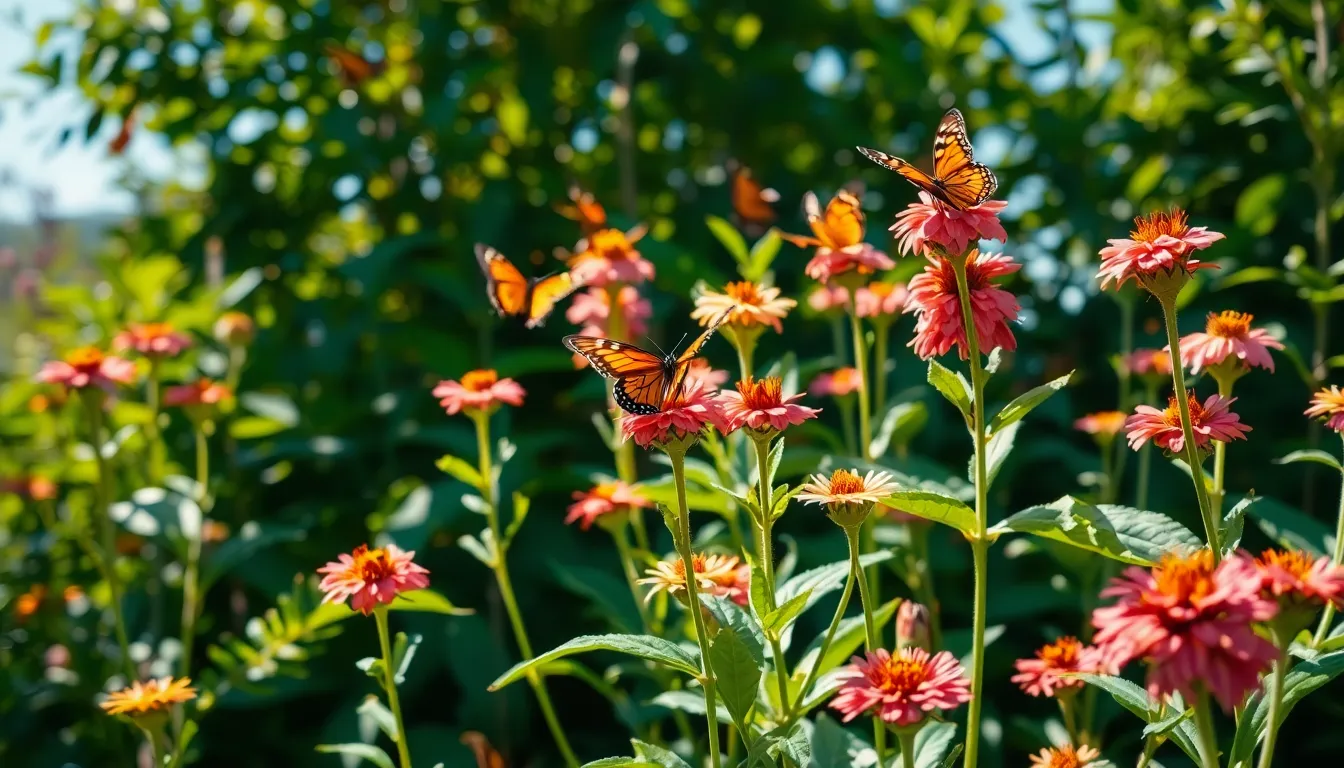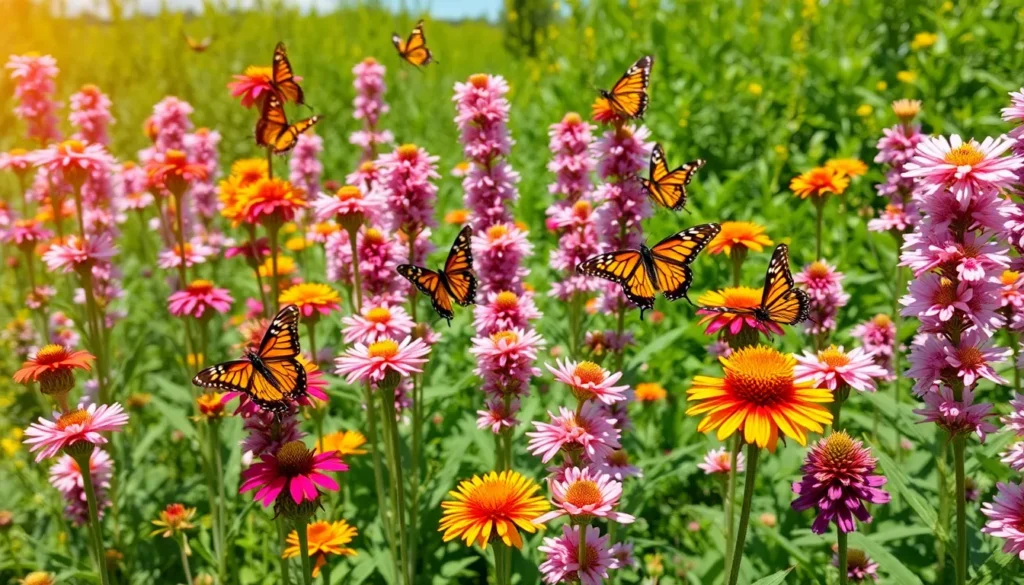Table of Contents
ToggleWhen it comes to attracting the elusive hingagyi, choosing the right milkweed is like picking the perfect outfit for a first date—crucial for making a lasting impression. With a variety of milkweed species available, it can feel overwhelming to find the one that’ll make those charming little critters swoon. But fear not; this guide is here to help you navigate through the leafy maze!
Understanding Hingagyi
Hingagyi, also known as the milkweed butterfly, relies heavily on milkweed plants for survival. These butterflies lay their eggs on specific milkweed species, as the caterpillars feed solely on these plants. Choosing the right type of milkweed directly influences hingagyi populations in a garden or habitat.
Key factors include the nutritional value of the milkweed, which affects caterpillar growth and development. Common types of milkweed, like Asclepias tuberosa and Asclepias incarnata, demonstrate regional preferences. Asclepias tuberosa thrives in drier areas, whereas Asclepias incarnata prefers wetter environments. Each plant supports hingagyi in unique ways by providing essential nutrients and a habitat.
Additionally, the flowering period of milkweed greatly impacts adult hingagyi. Certain species bloom earlier or later in the season, supplying nectar sources at critical life stages. Maintaining a variety of milkweed types ensures a continuous food supply throughout the hingagyi lifecycle.
Sustainability plays a vital role in supporting hingagyi. Planting native milkweed species encourages local populations to flourish. By cultivating these plants, gardeners contribute to the delicate ecosystem hinged upon milkweed. Selecting the right milkweed varieties means advocating for hingagyi and enhancing biodiversity in the environment.
Engagement in community efforts also raises awareness about hingagyi conservation. Local groups often promote planting native milkweed and provide resources for proper selection. Choosing the right plants enhances gardens while fostering a thriving hingagyi population.
Importance Of Milkweed For Hingagyi

Milkweed plays a crucial role in attracting hingagyi, also known as milkweed butterflies. Selecting the right species enhances their habitat and supports their lifecycle.
Benefits Of Milkweed
Milkweed provides many benefits to hingagyi. Nutrient-rich leaves serve as the primary food source for caterpillars. Choosing native milkweed species promotes healthy growth and sustains local populations. Flowers produce nectar essential for adult butterflies, promoting reproduction and attracting additional pollinators. Utilizing diverse milkweed varieties supports genetic diversity, strengthening community resilience.
The Role Of Milkweed In Ecosystems
Milkweed contributes significantly to ecosystems. It acts as a host plant, supporting various butterfly species alongside hingagyi. This plant provides habitat and food, fostering biodiversity within local areas. By planting milkweed, gardeners cultivate environments that attract beneficial insects. Enhanced pollinator populations promote plant reproduction, ultimately benefiting the entire ecosystem. Local wildlife also thrives in areas where milkweed flourishes, resulting in healthier, balanced ecosystems.
Which Milkweed For Hingagyi
Selecting the appropriate milkweed species is vital for attracting hingagyi, as it ensures a thriving environment for caterpillars and adult butterflies.
Recommended Milkweed Species
Asclepias tuberosa, commonly known as butterfly milkweed, excels in well-drained soil and sunny locations. This species offers vibrant orange flowers, attracting adult hingagyi. Asclepias incarnata, or swamp milkweed, flourishes in moist conditions and features pink blooms, providing essential nectar during the summer. Another option, Asclepias syriaca, also known as common milkweed, thrives in a variety of soils and has purple flower clusters, helping to sustain both caterpillars and adult butterflies. Planting a mix of these species promotes diverse habitats, beneficial for hingagyi and other pollinators.
Factors To Consider When Choosing Milkweed
Gardeners should consider the local climate and soil conditions when selecting milkweed. Assessing light exposure is crucial since some species prefer full sun while others tolerate partial shade. Regional plant preferences influence the growth of milkweed; using native species supports local ecosystems. Additionally, the blooming period affects nectar availability for adult hingagyi, with staggered flowering times ensuring continuous food sources. Lastly, choosing healthy, disease-resistant plants enhances survival rates and promotes a robust population of hingagyi throughout their life cycle.
Cultivation Tips For Milkweed
Selecting the appropriate environment encourages healthy milkweed growth. Choose well-drained soil and ensure it receives full sun exposure. Asclepias tuberosa thrives in drier, sandy areas, while Asclepias incarnata flourishes in wetter conditions.
Plan for adequate spacing when planting milkweed. Each plant requires about 18 to 24 inches between them for optimal air circulation and growth. Regular watering promotes root establishment, especially during the initial planting phase.
Focusing on native milkweed varieties enhances local biodiversity. These species adapt better to regional climates, reducing the need for extensive maintenance. Additionally, native options are more resilient against pests and diseases.
Monitoring for pests is essential in any garden. Keep an eye out for aphids or beetles that may affect milkweed health. Introduce beneficial insects like ladybugs to control pests naturally.
Use organic fertilizers to promote nutrient-rich soil without harming local wildlife. Apply once in early spring to support growth during the growing season. Avoid synthetic chemicals to maintain a safe habitat for hingagyi.
Deadheading milkweed after blooming encourages additional growth. This practice also helps prevent self-seeding if unwanted. Cultivating healthy milkweed throughout the year ensures a consistent food supply for caterpillars and nectar for adult butterflies.
Having a diverse selection of milkweed boosts genetic diversity within local ecosystems. Plant multiple species to attract various butterfly populations, maximizing pollinator benefits.
Consider engaging with local gardening groups for shared knowledge. They often provide resources and support for successful milkweed cultivation. Community efforts can lead to significant conservation impacts, benefiting hingagyi and local environments.
Selecting the right milkweed species is essential for attracting hingagyi and supporting their life cycle. By understanding the specific needs of these butterflies and the characteristics of various milkweed types, gardeners can create a thriving habitat that fosters both caterpillar development and adult butterfly activity.
Emphasizing native varieties not only aids hingagyi populations but also enhances local biodiversity. Engaging with community efforts to promote milkweed planting can further amplify conservation initiatives. Ultimately, the right choice of milkweed enriches ecosystems and creates a vibrant garden space that benefits both butterflies and other pollinators.




